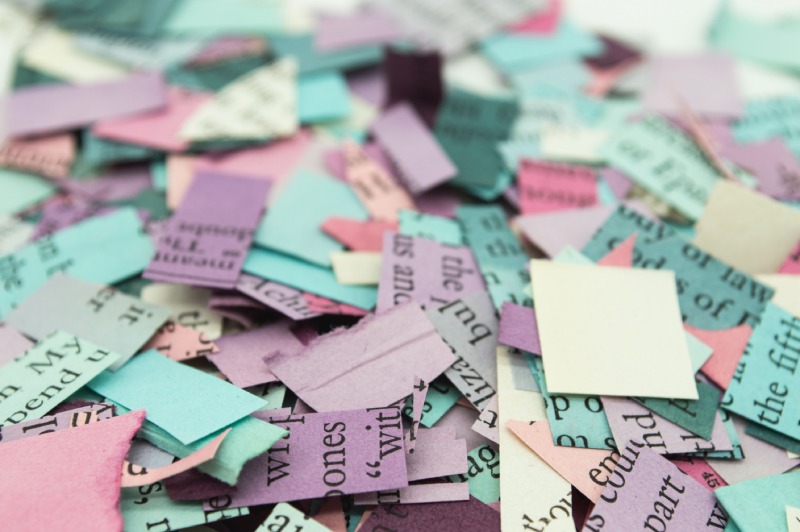Paper recycling is a crucial aspect of sustainable waste management and environmental conservation. By reducing the demand for virgin paper production, we can minimize deforestation, save energy, and decrease greenhouse gas emissions. Implementing effective paper recycling practices not only contributes to a healthier planet but also offers economic benefits and promotes a culture of responsible consumption. In this article, we will explore the key strategies and steps to establish successful paper recycling initiatives.

Why Paper Recycling Matters
Before delving into the implementation of effective paper recycling practices, it’s essential to understand why paper recycling matters. Here are a few compelling reasons:
- Conservation of Resources: Recycling paper reduces the need for fresh raw materials, such as trees. This helps conserve natural resources and preserves ecosystems.
- Energy Savings: Producing paper from recycled materials requires significantly less energy compared to making it from scratch, reducing carbon emissions.
- Waste Reduction: Proper paper recycling diverts waste from landfills, extending their lifespan and minimizing the environmental impact.
- Economic Benefits: Recycling paper generates revenue, creates jobs in the recycling industry, and reduces waste management costs for businesses and municipalities.
Steps to Implement Effective Paper Recycling
Implementing successful paper recycling practices involves a series of steps that can be customized to suit the specific needs of your organization or community:
1. Assessment and Planning
Before initiating a paper recycling program, conduct a thorough assessment to identify the types and volumes of paper waste generated. This assessment will help you determine the scale of the recycling initiative and plan accordingly.
- Identify the paper waste sources: Determine whether the paper waste originates from offices, schools, residential areas, or commercial establishments.
- Estimate paper waste volume: Quantify the amount of paper waste generated daily, weekly, or monthly to allocate appropriate resources.
2. Setting Up Collection Systems
Efficient collection systems are the backbone of any recycling program. Different collection methods can be employed based on the waste sources identified:
- Office Bins: Provide clearly labeled recycling bins for paper waste in offices and public spaces to encourage proper disposal.
- Community Drop-Off Points: Set up conveniently located collection points where residents can drop off their paper waste.
- Curbside Pickup: Collaborate with waste management services to include paper recycling in curbside pickup schedules for households.
3. Educating and Engaging Stakeholders
Raising awareness and fostering a sense of responsibility among stakeholders are vital for the success of a paper recycling program:
- Employee Training: Educate employees, students, or residents about the importance of paper recycling, the types of paper that can be recycled, and the correct disposal procedures.
- Community Workshops: Organize workshops and seminars to inform the community about the benefits of recycling and how to participate effectively.
4. Implementing a Sorting System
Proper sorting of paper waste ensures that only suitable materials are sent for recycling, improving the quality of recycled paper:
- Labeling Guidelines: Clearly label bins with acceptable paper items, such as office paper, newspapers, magazines, and cardboard.
- Separation at Source: Encourage individuals to separate paper waste from other recyclables and non-recyclables at the point of disposal.
5. Collaborating with Recycling Centers
Establish partnerships with local recycling centers or facilities equipped to process paper waste:
- Research Facilities: Identify recycling centers that have the necessary infrastructure to handle different types of paper waste.
- Logistics Planning: Determine the logistics of transporting collected paper waste to the recycling center efficiently.
6. Monitoring and Continuous Improvement
To ensure the ongoing success of your paper recycling program, implement monitoring mechanisms and adapt as needed:
- Regular Audits: Conduct regular audits to assess the effectiveness of the program, identify challenges, and implement improvements.
- Feedback Channels: Establish channels for stakeholders to provide feedback and suggestions, creating a sense of ownership and involvement.
Recycling Do’s and Don’ts
Here’s a quick reference list of items that should and shouldn’t be included in your paper recycling bins:
Accepted Paper Items
- Newspapers and magazines
- Office paper and envelopes
- Shredded paper (contained in a paper bag)
- Cardboard boxes (flattened)
- Phone books and catalogs

Prohibited Paper Items
- Food-Contaminated Paper: Paper soiled with food, grease, or oil should not be recycled.
- Tissue and Paper Towels: These items are generally not accepted due to their low-quality paper and potential contamination.
- Sticky Notes with Adhesive: Sticky notes with adhesive backing can interfere with the recycling process.
- Metallic Paper or Wrapping Paper: Paper with metallic coatings or heavy ink coverage is usually not recyclable.
Paper Recycling by the Numbers
To emphasize the positive impact of effective paper recycling, let’s take a look at some impressive statistics:
| Statistic | Data |
|---|---|
| Recycling one ton of paper | Saves about 17 trees |
| Energy saved from recycling paper | Powers an average home for 6 months |
| Reduction in greenhouse gas emissions | Equivalent to driving a car for 3,700 miles |
| Water saved through paper recycling | 7,000 gallons |
Conclusion
Implementing effective paper recycling practices is a collective effort that brings both environmental and economic benefits. By following the steps outlined in this article, you can establish a successful recycling program tailored to your organization or community’s needs. Remember that the journey towards sustainability is ongoing, and regular monitoring and improvement will contribute to a greener and more responsible future. So, let’s embark on this journey to make a positive impact one recycled paper at a time!




